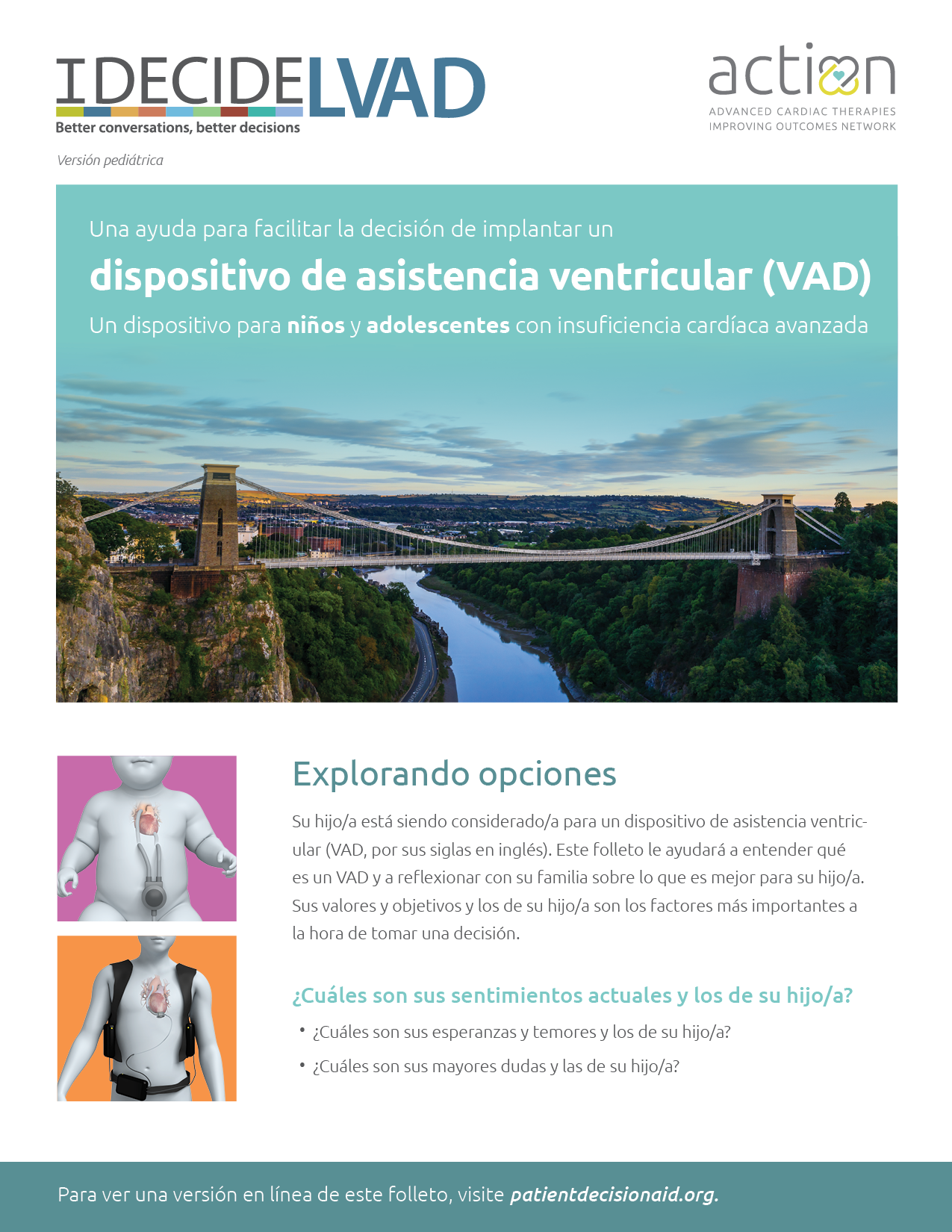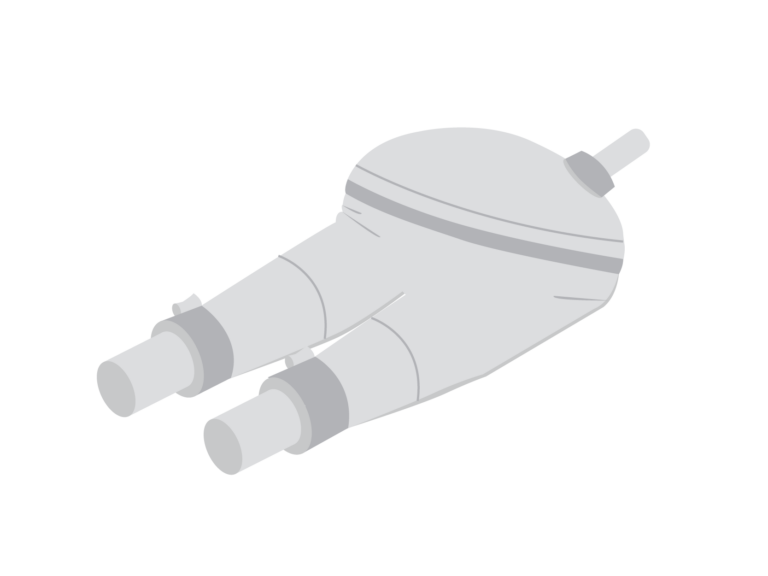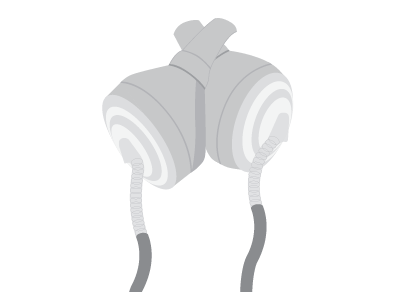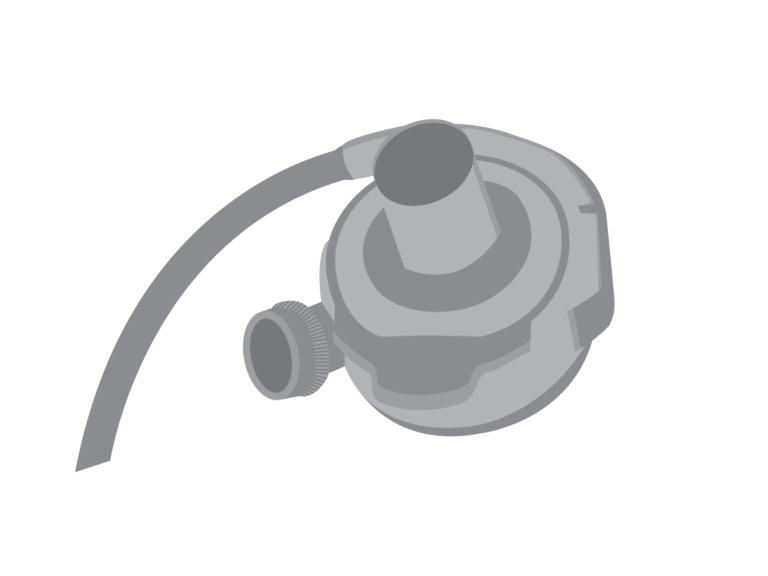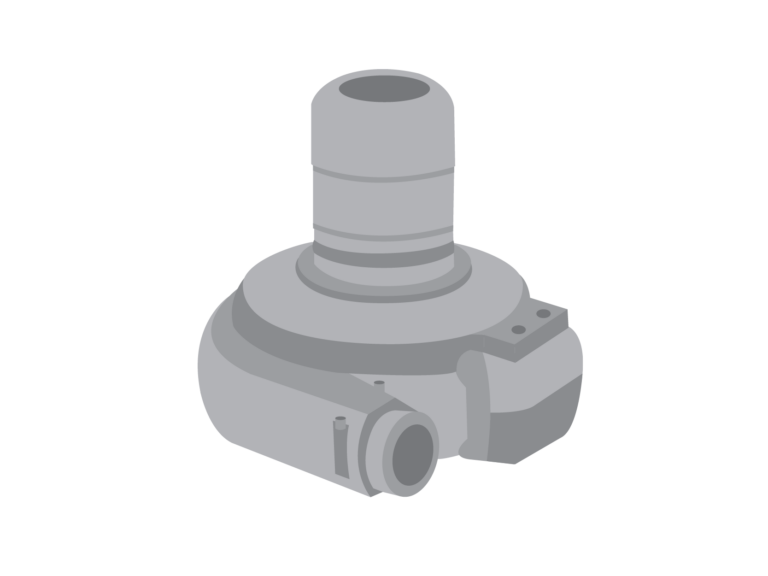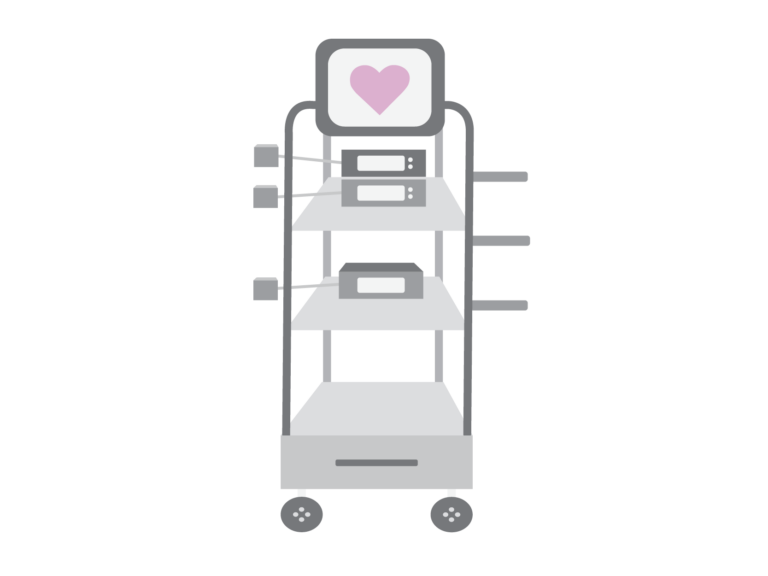Types of VADs
VADs can be defined by the action that they perform. VADs can pump blood by a spinning action (continuous flow VAD) or by a pumping action (pulsatile flow VAD).
VAD Decision Aid Booklet
Check out this pediatric version of the IDecide VAD decision aid booklet. This booklet was designed for pediatric patients and their families to help them better understand VADs and determine which one might be best for their unique situation. Available in both English and Spanish.
Pulsatile
Pulsatile flow VADs work by pumping blood in and out of a chamber. Air moves a membrane to fill and eject blood from the chambers to the body. The pump is connected to a large machine called a driver. If you have a pulsatile flow VAD, you will have a pulse. Below are common examples of pulsatile flow VADs.
Berlin Heart EXCOR®
Learn about the Berlin Heart EXCOR®, how it works, the benefits and risks, and all about the surgery journey.
SynCardia (TAH-t)
Learn about the SynCardia Total Artificial Heart (TAH-t), how it works, the benefits and risks, and all about the surgery journey.
Continuous Flow
Continuous flow (CF) VADs work by continuously spinning blood from the weak part of the heart, through the device, out to the aorta, and the rest of the body. There is a small motor located inside the VAD that helps with this spinning motion. The pump is always connected to a controller and requires a power source to keep the VAD spinning. Because the continuous flow device bypasses the weakened heart chamber, you may not be able to feel your pulse. Below are common examples of continuous flow VADs.
HeartMate 3™ LVAD
Learn more about the HeartMate 3™
LVAD, how it works, the benefits and risks,
and all about the surgery journey.
PediMag™
& CentriMag™
Learn about the PediMag™ and CentriMag™
VADs, how they work, the benefits and risks,
and all about the surgery journey.

